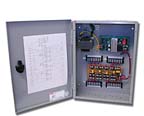
One of the most notable new capabilities for scaleable deployment is database partitioning, says Lowen.
The capability allows customized parameters on individual employee and department levels for multi-tenant environments like large office sites, campuses with different departments or large museum spaces.
Another development in enterprise level systems is IP tunneling, which facilitates more direct and efficient point-to-point communication across a series of routers and bridges.
Open architecture opens up
For example, with an n-man rule/occupancy restriction stand-alone utility in certain systems, security can set parameters based on the minimum/maximum number of people allowed in a given space at any given time. Typical applications include control of meeting spaces, critical areas such as information technology (IT) centers, or lab areas with minimum safety count rules.“As more systems integrators and end-users scale their security operations within different vertical markets, we anticipate that the industry will demand new feature capabilities based on specific system needs,” Lowen said. “The open architecture now provided with advanced new access control solutions provides a versatile platform that can deliver new capabilities on an evolutionary basis providing the highest levels of cost-efficiency.”
Mantraps, long a mainstay in government and military applications, also show how integrated systems have gone beyond the single door.
Mantraps provide an effective means to physically control access/egress using multiple doors while detaining unauthorized persons until security provides clearance, Bryan Sanderford of Dortronics Systems, Sag Harbor, N.Y., said. The firm has several lines of mantraps.
In its most basic form, a mantrap is comprised of a set of doors that requires the person to enter the first while the others are closed. Mantraps are typically manual swing doors forming a vestibule but can also utilize sliding doors or gates. Some mantraps are designed using turnstiles or revolving doors.
Once inside the first door, the person cannot pass through the second door until the first door is closed. In large-scale systems such as those found in casinos, healthcare facilities, government installations and large financial institutions, as many as 99 doors can be configured into a single massive mantrap system.

